What does that even mean?
Here's 7 reasons why Back to the Future is the ultimate Hollywood blockbuster.
1. A Perfectly Structured Script
The script is about as perfect a distillation of 3 act structure as you can find anywhere. Every book written about screenplay structure has to come to Back to the Future and bow in reverence. Every emotional beat, every character arc, every object that gets introduced and later fulfilled, every scene that moves forward both plot and character, every event that raises the stakes and complicates the happy outcome. It effortlessly reveals character and plot information while our narrative focus is looking elsewhere. It is a magic act but even if I know the trick I see the beauty in the execution.
That's not even mentioning the witty dialogue.
"Where's my pants?"
"Over there...on my hope chest."
2. Flawless Casting
Here you have extremely charismatic and likable performances by a group of actors just eclectic enough to keep things interesting but not too eclectic as to be polarizing or overly esoteric. Obviously, Michael J. Fox hits just the right notes of humor, detachment, sarcasm, sweetness and irreverence. Famously, though Fox was the first choice for Marty, his role on Family Ties complicated matters and Eric Stoltz was brought in. Four weeks into filming, Zemeckis was convinced Stoltz didn't have the humor or personality required for the part and was able to get Fox to agree to it, though it added $3 million due to overages and set back production because of the re-shoots. But it was worth it. I can't say at all the Back to the Future would be what we know it to be if it had Stoltz in the lead.
Although Fox makes the whole thing fun to watch, it's Lea Thompson that makes it work. Her and Crispin Glover make the narrative stakes active and urgent, while wearing their quirks on their shoulders. I mean think about it: Crispin Glover is a total weirdo who was born to play George McFly. No disrespect to him, but it kind of doesn't matter that he's done anything else. Christopher Lloyd is a maniac, finally given the space to be roam. He can play it as loud as he wants (and the louder the better).
3. A Touch of Nostalgia
In 1985, Back to the Future would've been targeting a young audience. But it plays with 50s nostalgia as a theme, as a literal representation, and as a plot point. It takes Marty's parents back to when they were his age which does two things: 1) it gives parents in 1985 a desire to relive their high school days, 2) it makes high school feel like a defining moment in life. This last point circles back and gives common ground for both youth and parents to connect in 1985 over Back to the Future. Of course, part of what makes Back to the Future feel timeless is that it deals with two distinct time periods very directly and now, this far removed, creates a sense of nostalgia for both that continues to pay dividends for the movie's cultural cache.
4. A Restrained Aesthetic
In Back to the Future, Zemeckis hones what would become a hallmark of his productions with a keen, non-showy integration of effects within his story. Special effects are restrained by his aesthetic not elaborated by it. He gives the audience something they've never seen before by giving them the special effect, not by presenting the world from unseen angles or unnatural camera movements. Sure, some of this may be restrained by technical limitations of mid-80s film production. But not everyone from the 80s understood the medium well enough to work with their limitations rather than against them. Audiences may remember Back to the Future more as an effects movie than it is. It was never nominated for an Academy Award because it really didn't utilize special effects as much as it would in the sequels. Everything is played pretty practically except for the processed lightening and the final shot of the flying Delorean.
Beyond effects, Zemeckis keeps his action and cutting very clear and focused. Take the opening sequence, which is a bravura introduction of everything the film needs established. A slow pan across a crowded table of clocks from throughout history -- we get time progression, character introductions for Doc and Marty, setting introduction for Hill Valley, narrative problem introduction of the stolen plutonium...all while feeling like a simple pan across an interesting setting. (We even get a little glimpse at the future with a figure hanging off a clock hand.)
5. Memorable Wardrobe and Props
People may not consider this except at Halloween, but wardrobe is as much a part of the memorable nature of the movie as anything in the story. Marty McFly's vest, Doc's lab coat, the heightened styling of the 80s McFly family, the mirroring of Loraine's purple dress to Marty's purple underwear. Wardrobe is absolutely essential to creating something memorable. Think of the props too. There are a small list of items that have significance in the movie. In order of introduction: skateboard, guitar, clock tower, and time machine. All four are introduced in the opening scene. Each one has a narrative function, a character function and a symbolic function. Two are temporal and have contemporary and historical counterparts; two are "eternal" and remain constant. If we simply look at the Delorean DMC-12, one cannot find something any more of its time than the very brief period in which it was being manufactured between 1981-1983. It is achingly dated to a very specific moment in time. But 1985 as a date is desperately important, so it is important that the item that has the most direct tie to 1985 be as much of the time as possible. Funny that the Delorean is both timely and timeless in equal measure.
6. It is a Genre Unto Itself
Back to the Future is the distilled essence of the Hollywood blockbuster. If there is one movie I would use to explain to aliens exactly what this particular form of cinema is and how it works, I wouldn't pick Jaws, I wouldn't pick Star Wars, I wouldn't even pick Indiana Jones or Jurassic Park...I would have the aliens sit down with Back to the Future because it is all sitting there on the screen. Jaws is perfect in its own way, but its a character story, really. Star Wars is too quirky. The quirks resonated, but it is not the distilled essence. Indiana Jones and Jurassic Park are genre movies, clearly coming from a specific point of nostalgia and popular re-imagining.
Back to the Future is its own genre. Yeah, there's elements of sci-fi (just enough to feel smart), there's elements of comedy (just enough to keep things moving), there's elements of drama (just enough to give it heart) and elements of history (just enough to make it feel conscious). Hollywood movies need to be all things to all people. Many have tried to make that world, but few have succeeded.
7. Robert Zemeckis
There is a reason the essential blockbuster can't be a Spielberg film. They may make billions of dollars and resonate with millions of people, but Spielberg is a master. He creates masterpieces. They are big, sometimes broad, always engaging, but they are absolute masterworks right alongside the greatest cinematic artists from Welles or Ford to Renoir or Ozu. And look, I love Robert Zemeckis. You will probably not find a bigger booster of RZ who still maintains deep art house cred... But Zemeckis is no Spielberg. That's no knock on the guy. He can't be Spielberg; he has to direct the perfect blockbuster which means he learns from Spielberg, imitates him in parts, takes notes wholesale from him even...but he has to be himself and bring his Zemeckian details to bear. It can't be too deep, it can't be too broad, it can't be too shallow. Everything has to be just right and if Zemeckis is anything he is the king of just right.
So, Back to the Future is the perfect blockbuster. Compared to a lot of what is out there now, it is almost shockingly small and simplistic. There are no mass armies, no epic pull-backs, no ostentatious camera movements, no shocking revelations.
Some may hate it for being a blockbuster rather than an art film, some may find it boring, some may find its lack of edge frustrating, some may feel like it is bland and unchallenging (though, admittedly, not without some surface charms). Who cares what you think? This is Hollywood cinema, perfected. You just have to realize that. It is a brick wall. It does no use getting mad at the brick wall for not being a flower garden. In fact, if you recognize the brick wall in relationship to the flower garden it can actually be a beautiful thing, a desirable thing.
So that's it. A crazy, rambling rant in defense of a movie that hardly needs a defense because it was perfectly designed to be above defense and to be universally loved. It is ubiquitous. It is timeless. It is of its time. And it is called Back to the Future.
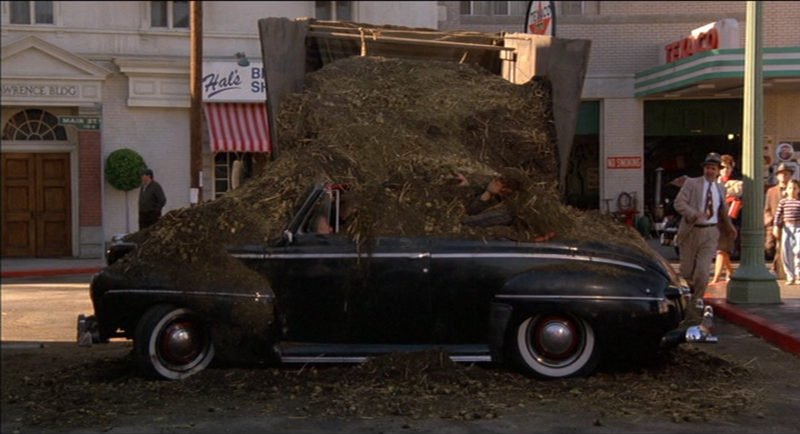
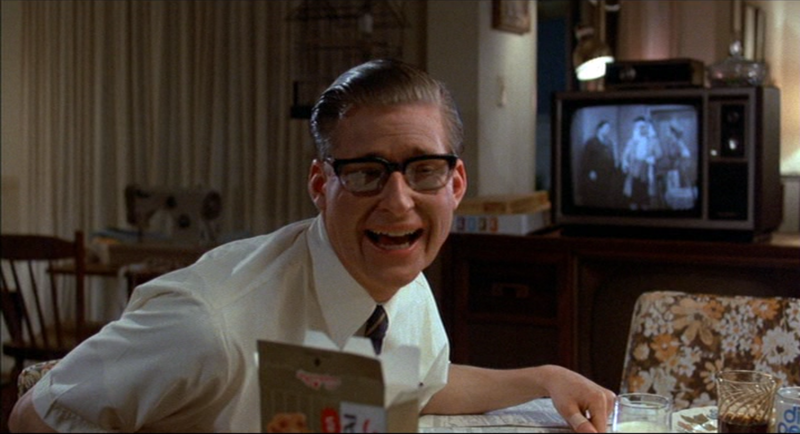
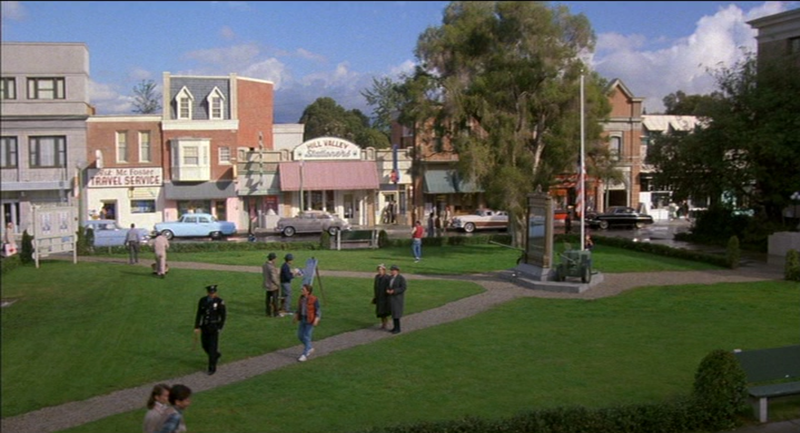


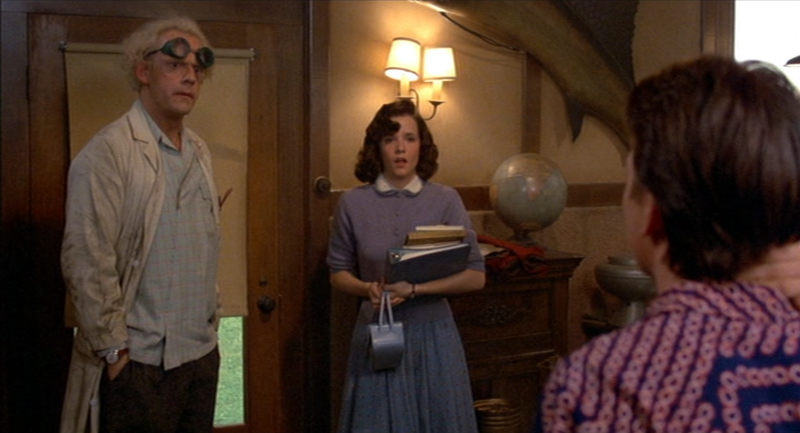
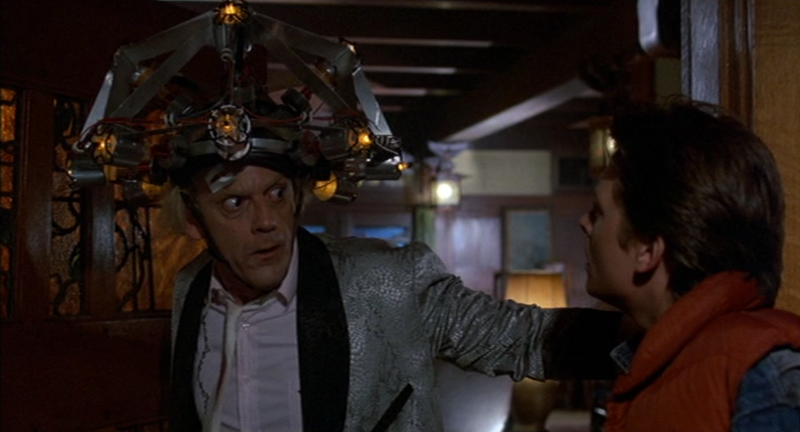
No comments:
Post a Comment